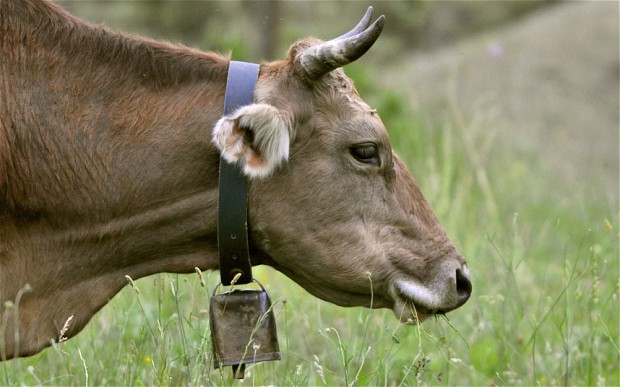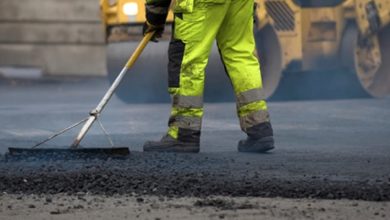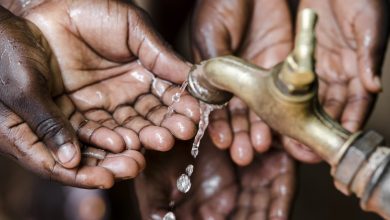‘Innovative ways needed to protect livestock from wild animals’

Rural communities must desist from putting bells on their cattle, as these alert predators such as lions and hyenas on their location making it easy to feed on them, conservationists have said.
Putting bells around cattle’s necks helps villagers to keep track of them, especially if they are lost.
Victoria Falls Wildlife Trust, Wildlife Manager, Roger Parry whose organisation has been educating communities in Matabeleland North on managing human and wildlife conflict said communities have to come up with innovative ways of locating their cattle.
“Traditionally, cattle farmers put a bell on their neck but we did research and the data we collected was 75 percent of all cows that were killed had bells on them. Actually, lions listen to the bells and use that sound to locate the cattle. The bells are sort of a dinner bell,” he said.
The best way to protect livestock from wild animals, suggested Parry, was to have ‘predator-proof bomas,’ which are kraal-like structures erected to prevent wild animals’ attacks on livestock particularly lions.
“Especially in areas prone to human and wildlife conflict, we are promoting predator-proof bomas,” he said.
Working with the community, Victoria Falls Wildlife Trust, formed mobile boma committees where locals come together to put up these structures for their cattle.
“A community boma can have up to 10 to 20 families who put their cattle together and can hold 240 cattle. This protects the livestock at night and the idea is for the cattle to stay together,” Parry noted.
However, the conservationist acknowledged introducing the concept to communities was challenging as “culturally, people do not like putting all their cattle together.”
The bomas, apart from providing safety for the livestock, do have certain advantages.
“Bomas are moved every couple of weeks and those that were put up in May, June, July, August over cropping areas actually fertilise the soil. The community realised they could get up to three times more productivity from a boma fertilised land than from an unfertilised piece of land,” Parry said, adding this was “actually driving people to use the bomas more than protection of cattle.”
Last year, in a village under Chief Mvuthu in Hwange District, lightning struck cattle that were in one boma and most of the 19 cattle that were killed belonged to one person.
To ward against such disasters, the conservationist said communities were taught to put lightning conductors on bomas.
“Risk that incidents like this can happen is always there. The community closed down the boma for six months and there were lots of meetings as we asked them to talk it out,” Parry said.
Bongani Dlodlo, also with Victoria Falls Wildlife, stated since 2009 the organisation had been collecting data in surrounding areas for a baseline study to understand more on human wildlife conflict in identified hotspot areas
“For every reported conflict, we investigate every incident. We found about 46 percent of livestock were killed by hyenas and 44 percent were lions” he said.
“Hyenas attack from the back while lions eat from the front but when people are reporting they usually say it’s lions so we have to investigate the carcasses.”
Apart from creating bomas, the organisation has taught locals how to chase lions using vuvuzelas, which produce ‘hated’ loud monotone noises.
“We chase lions back into the wild and at the same time protect the cattle during day and night. This seems to work because ever since 2016 when we started chasing animals, no single lion was shot by Problem Animal Control (PAC). Historically PAC was shooting about seven lions a year,” he said.
Parry added that some lions had collars on them to keep track of them, especially against poachers, but those tracking devices also assisted if they were going to attack livestock.
“We have about 10 collared lions and if they cross a certain fence, warning signals are sent that lions are moving toward this place then Dlodlo communicates in the community WhatsApp groups for people to be ready to chase the lions,” he said.
Meanwhile, Parry stated that mitigation against human wildlife conflict needed a variety of tools.
“Over time, one tool doesn’t work so we have to change the whole time before animals habituate to that, which is why we may use firecrackers or vuvuzelas to scare them off,” he said.
These mitigation tools, highlighted Parry, are to empower locals to protect themselves and their livestock as no compensation is offered in Zimbabwe if predators attacked.
“In other countries like Botswana it is a different story they are able to do that, but here there is no policy to compensate for any human wildlife conflict,” said the conservationist.
“Funds generated from the CAMPFIRE model can go back into community development but in some areas, people have said it’s not working due to lack of resources.”
However, Parry claimed he was not a supporter of compensation for the reason that it drives lethargy in communities.
“This happened in Botswana, people don’t look after their cattle and couldn’t care less, saying ‘the government is going to pay’ but of course there is suffering that comes from wildlife. Our focus is to empower people to take care of themselves and protect their livestock,” he said.






